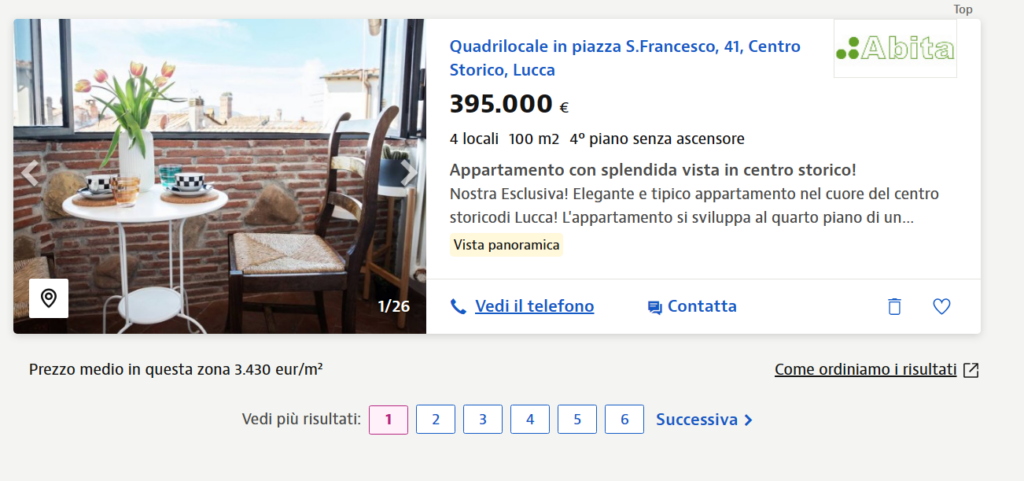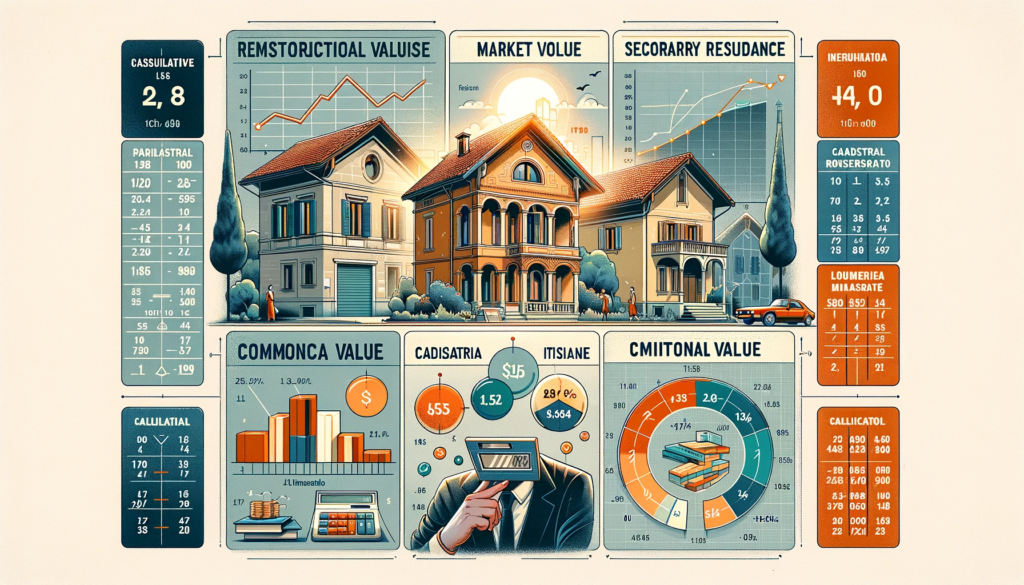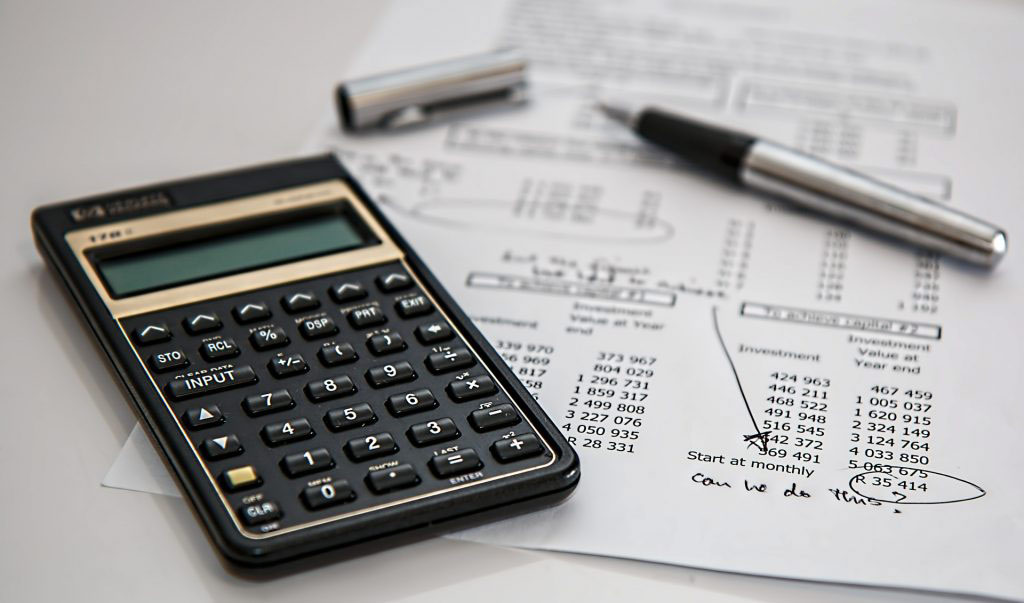Did you know that a single property in Italy can have up to six different values? In this article, we’ll explore how to calculate each of these values and determine which one to use based on your needs.
Different Types of Property Values
- Market Value: This is the value the property holds in the market, i.e., the price at which a seller is willing to sell and a buyer is willing to buy. If a seller sets a price too high without a willing buyer, the property won’t sell.
- Cadastral Value: Mainly used for calculating registration taxes in Italy. A property can have three cadastral values: for primary residence tax (lower), secondary residence tax (higher), and for IMU tax calculation. We’ll look at how to calculate these using different procedures.
- Reconstruction Value: Used primarily by insurance companies to calculate the insured value (more on this later).
- Emotional Value: While less “technical,” it’s still significant. Since a property is a place where we experience important moments and memories, we unconsciously assign it emotional value. However, emotional value can lead you astray and result in financial loss, whether you’re selling, buying, or investing.
Market Value
Market value is what we most often deal with in real estate transactions.
For example, calculating the market value is useful if you’re looking to sell a property and want to set the right price, or if you’re buying and want to ensure the asking price is fair.
There are three main methods to calculate market value, each used according to different scenarios. Let’s delve into them.
Comparative Method
The most commonly used methods for market value are comparative ones.
The basic concept is to look at recent sales of similar properties and estimate your property’s value accordingly. Here are the steps:
Surveying the Surfaces.
Accurately measure the property’s surfaces, including everything: house, land, cellars, attics, porches, etc. It’s important to keep these parts separate and note the square meters for each.Let’s consider a simple example: A 200 sqm villa with a 200 sqm garden and a 15 sqm balcony.
Calculating Commercial Surface.
Once all surfaces are measured, multiply them by the correct coefficient (see tables below). Each component of a house holds different values, and it would be incorrect to apply the same value uniformly. For example, if the living area is valued at 100%, the garden at 10%, and a habitable attic at 75%
Certainly! I’ll translate the contents of the table you’ve uploaded into English for you.
| DESCRIPTION | INCIDENCE | NOTES |
|---|---|---|
| Usable net floor area (Home) | 100% | Calculate up to a maximum thickness of 50 cm |
| Perimeter walls | 100% | Calculate up to a maximum thickness of 25 cm |
| Shared perimeter walls | 50% | Calculate up to a maximum thickness of 25 cm |
| Attics | 75% | Minimum average height 2.40 meters |
| Non-habitable attics | 35% | Minimum average height less than 2.40 meters and minimum height of 1.50 meters |
| * attic room | Minimum average height 2.40 meters | |
| Habitable lofts | 80% | With finishes similar to main rooms |
| Non-habitable lofts | 15% | Minimum average height 2.40 meters |
| Verandas | 80% | With finishes similar to main rooms |
| Verandas | 60% | Without finishes similar to main rooms |
| Taverns and habitable basements | 60% | Connected to main rooms |
| DESCRIPTION | INCIDENCE | NOTES |
|---|---|---|
| Balconies and Roof Terraces | 25% | Applicable up to 25 sqm, excess calculated at 10% |
| Terraces and Loggias | 35% | Applicable up to 25 sqm, excess calculated at 10% |
| Pocket Terraces of Attics | 40% | Applicable up to 25 sqm, excess calculated at 10% |
| Porticoes and Patios | 35% | Applicable up to 25 sqm, excess calculated at 10% |
| Courtyards | 10% | Applicable up to 25 sqm, excess calculated at 2% |
| Gardens and Pertinence Areas of “Apartments” | 15% | Applicable up to 25 sqm, excess calculated at 5% |
| Gardens and Pertinence Areas of “Villas and Cottages” | 10% | Applicable up to 25 sqm, excess calculated at 2% |
In our example:
- Living area: 200 sqm at 100% = 200 sqm
- Walls: conventionally estimated at 10% of the house’s surface = 20 sqm
- Garden: at 10% for not being too large (otherwise it would be 2%) = 20 sqm
- Balcony: 15 sqm at 25% = 3.75 sqm
Calculating the Price per Square Meter
Now that you know the commercial surface, multiply it by the right price. You need to figure out the value of similar properties in that area in recent months. Here’s what you can use as a benchmark:
- OMI values (real estate market observatory) from the Italian Revenue Agency, which creates structured reports by areas, property categories, and conservation status.
- Sales you know the price and surface of. Consider sales from the last six months, no older.
- Properties currently on the market. Consider the values and surfaces of properties currently for sale, but remember to deduct the negotiation from the asking price (at the time of writing this article, there’s an average discount of 10% on the asking price).

At this point, you will have obtained a price per sqm for properties similar to yours. This price must be “adjusted based on the pluses and minuses of your property.For example, if the villa you’re evaluating has a panoramic view that all the others in the area don’t have, you need to slightly increase the price per square meter you’ll apply.
Total Price and Final Adjustments
Multiply the price per square meter by the commercial surface to get the price. A skilled appraiser can make further corrections if they notice that the price obtained is too low or too high due to specific characteristics (but this requires extensive knowledge of the real estate market and a lot of experience).
Market Verification
At the beginning of the article, we mentioned that market value is the intersection of demand (buyers) and supply (sellers). Even if we follow the estimation method to the letter, if no buyer is willing to pay that price, no one will buy the property.
At Valente Italian Properties, we have computer tools that allow us to estimate the number of potential buyers and how much they are willing to pay (on average). But in the end, the market will give the final validation of the estimate.
Capitalization Estimate
To calculate the market (or commercial) value of a property mainly used to generate income (hotels, commercial buildings…), the capitalization estimate can be used.
It involves updating all the future income the property will be able to produce to calculate its current value. Attention: only the income deriving from the property, i.e., the rent, and nothing else, must be taken.
When using the income capitalization method to evaluate a property, it’s essential to distinguish the income directly linked to the property from those generated by the commercial activity that takes place inside.
Property-Related Income
These are the incomes generated exclusively from the use or rental of the property itself. In the case of a hotel, this would be the income that could be obtained by renting the entire building or parts of it to a manager or another entity. The value of these incomes is linked to the physical characteristics and location of the property, as well as to the conditions of the real estate market.
Business Management Income
These incomes come from the actual management of the hotel, such as earnings from room bookings, the restaurant, additional services, etc. These incomes are linked not only to the property but also to the management of the activity, the quality of the service, the reputation of the hotel, and other operational factors.
Practical Example: Hotel
In a hotel, the rental income might come from renting the building to a hotel operator. This type of income would be considered in the property’s valuation using the capitalization method. On the other hand, the profits obtained by the hotel operator through the management of the hotel (for example, from customers’ payments for rooms) are not directly related to the value of the property itself and, therefore, should not be included in its valuation through capitalization.
Importance of the Distinction
It’s crucial to make this distinction to avoid an inaccurate valuation of the property. Including income from the business activity could lead to an overestimation of the property’s value, as these incomes are influenced by many other factors that go beyond the physical characteristics and location of the property.
In conclusion, the income capitalization method for real estate valuation should focus exclusively on the income derived directly from the property, excluding those generated by the commercial activity carried out within the property.
Calculating the Value of a Property with the Capitalization of Future Income
Here is the formula to apply:
- Annual Net Income represents the total earnings generated by the property in a year, usually after deducting operating expenses (such as maintenance, taxes, management, etc.).
- Capitalization Rate is the expected or required return on investment. The capitalization rate can vary considerably depending on various factors, including the type of property, geographic location, investment risk, and market conditions. A higher rate generally indicates greater risk and vice versa.
Limitations: This method assumes that incomes and expenses will remain relatively stable over time, which may not always be the case. It may also not be the most suitable method for properties that do not generate income, such as primary residences.
For a hotel generating an annual net income of 100,000 euros and considering a capitalization rate of 5%, the estimated value of the property would be 2,000,000 euros.
This estimate is based on the capitalization formula, where the annual net income is divided by the capitalization rate to obtain the property’s value. In this case, dividing 100,000 euros by 5% (or 0.05) results in a value of 2,000,000 euros for the estimated hotel.
Transformation Value
This method is used in the valuation of buildable land or properties that require significant renovations.
- Calculation of the finished value (once the intervention is completed) with the comparative method (see above)
- Subtraction of all the necessary expenses to reach that result (renovation or construction, technical expenses, and also profit for the enterprise developing the operation)
- What remains is the current commercial value of the property.
Cadastral Values
When assessing property values in Italy, whether it’s for a primary residence, a vacation home, or tax purposes (IMU taxable value), there are specific procedures to follow, involving the application of certain coefficients and formulas. These property values are based on the cadastral income of the property, which is multiplied by coefficients set by law. Let’s see how this is done for each category.
Primary Residence
Definition: The primary home is considered the main residence of an individual or family.
To calculate the cadastral value of a primary residence, the formula is:
Cadastral Value of Primary Residence = Cadastral Income × Coefficient
The coefficient here is 115.5.
Secondary Home
Definition: A secondary home is any residential property that is not the owner’s primary residence. This includes vacation homes, investment properties, or any other property where the owner does not spend most of their time
Calculating the cadastral value for a vacation home follows the same formula, but with a different coefficient. Here, the coefficient is 126.
IMU Taxable Value
To determine the IMU taxable value, a similar formula is used, but again, the coefficient changes:
IMU Taxable Value = Cadastral Income × 160 (coefficient)
Example Calculation
Let’s say the cadastral income is €1,000, for a residential property in group A (excluding A/10 offices).
Calculation for Primary and Vacation Homes:
Cadastral Value of Primary Home = €1,000 × 115.5 = €115,500
Cadastral Value of Vacation Home = €1,000 × 126 = €126,000
IMU Taxable Value Calculation:
IMU Taxable Value = €1,000 × 160 = €160,000
Reconstruction Value
This answers the question: how much would it cost to rebuild the property in its current state of maintenance today?
This value is used by insurance companies and banks to determine the insurance coverage for their clients against fire and explosion. It assumes that if the property were completely destroyed, the amount needed to cover all rebuilding costs would be the reconstruction cost.
A couple of points to consider: For antique or luxury properties, the reconstruction cost is usually higher than the market value, as rebuilding such properties with today’s prices would be extremely costly. For new constructions, the reconstruction value might be lower than the market value.
Sentimental Value
This should never be used in real estate transactions. Whether buying or selling, the value calculation should be based on logical and studied reasoning. Allowing sentimental value to influence the decision can be very risky.




